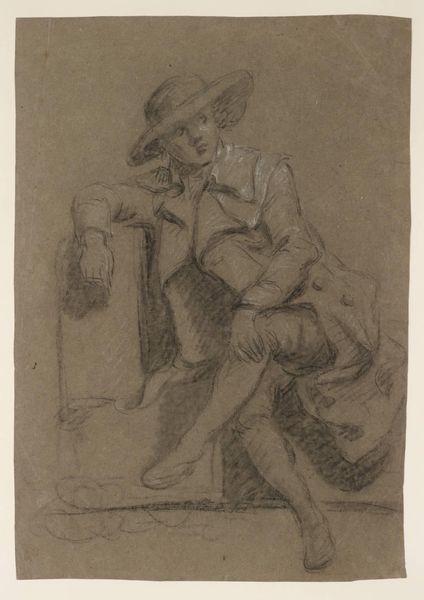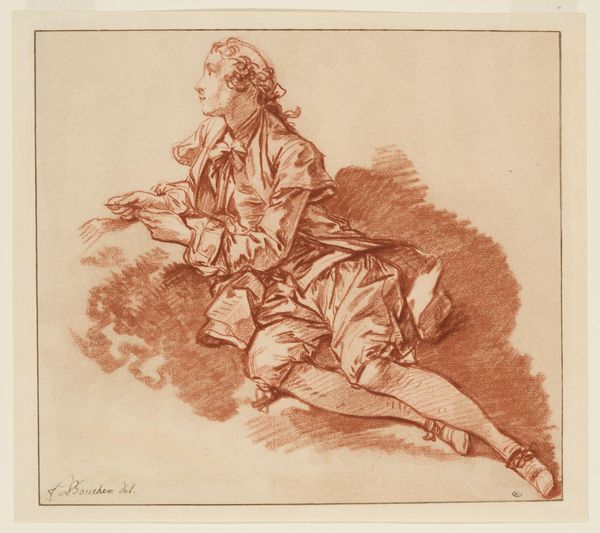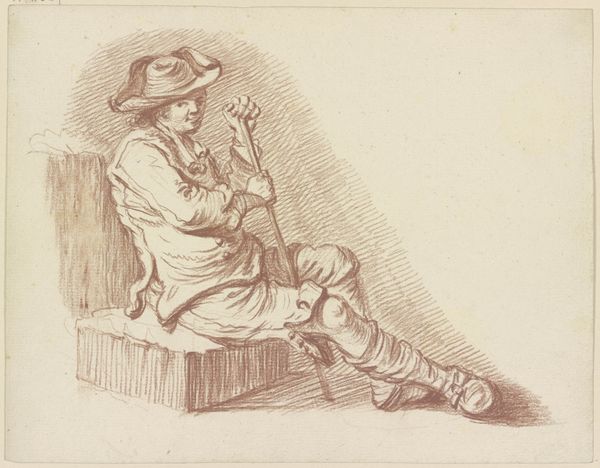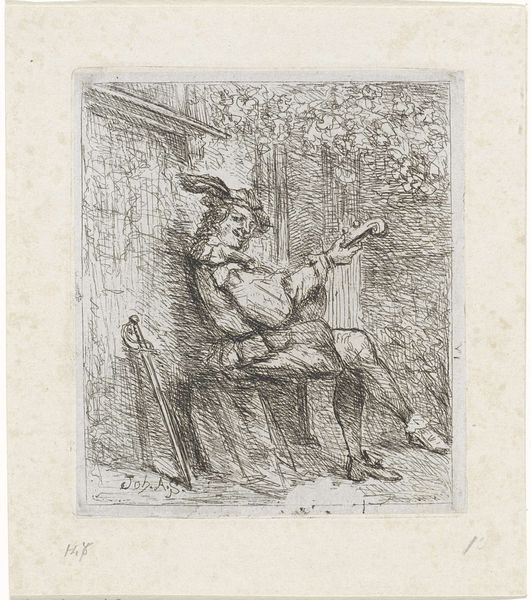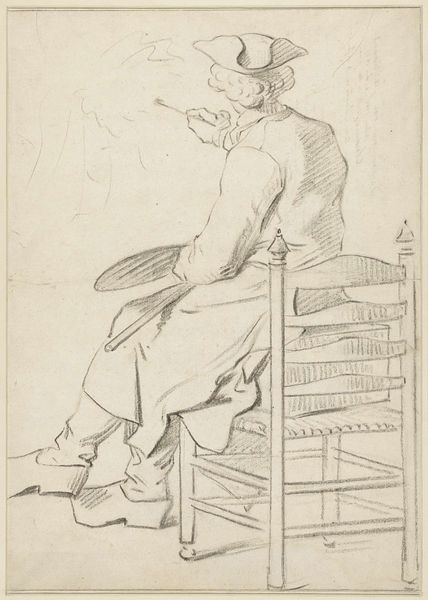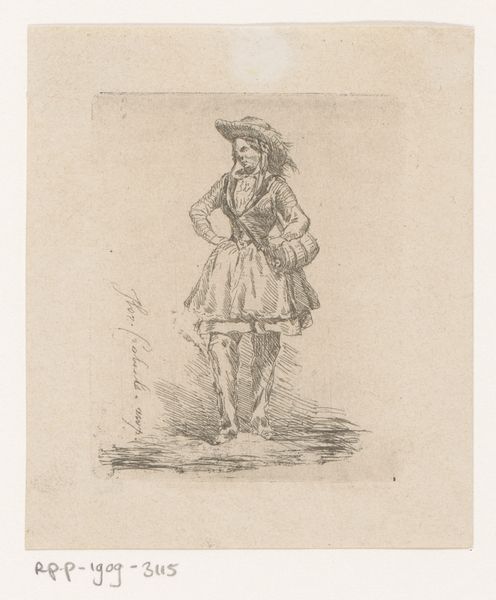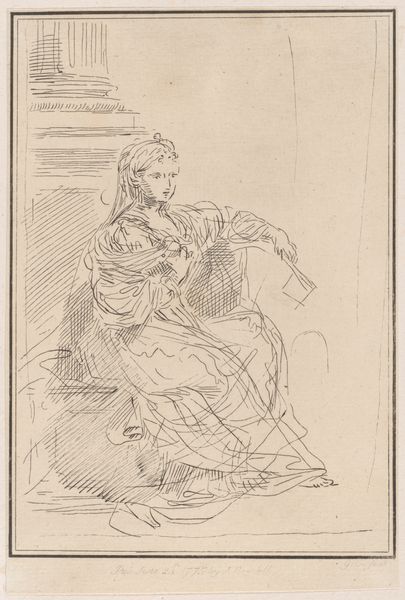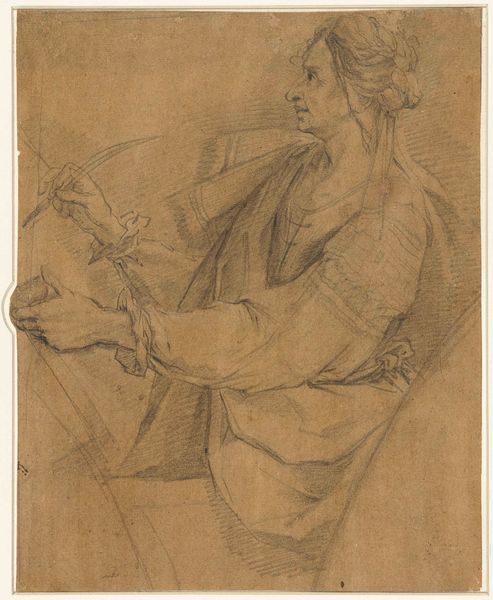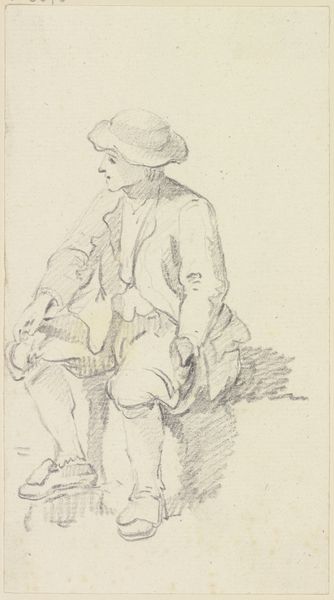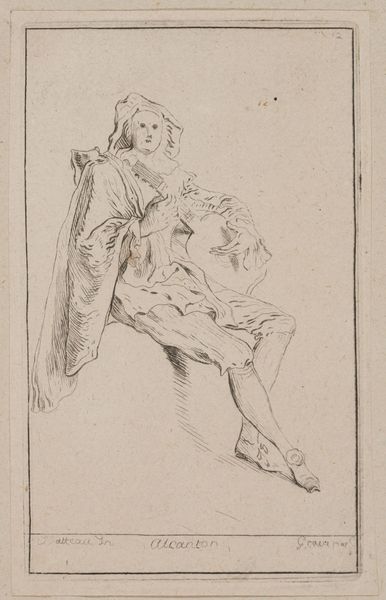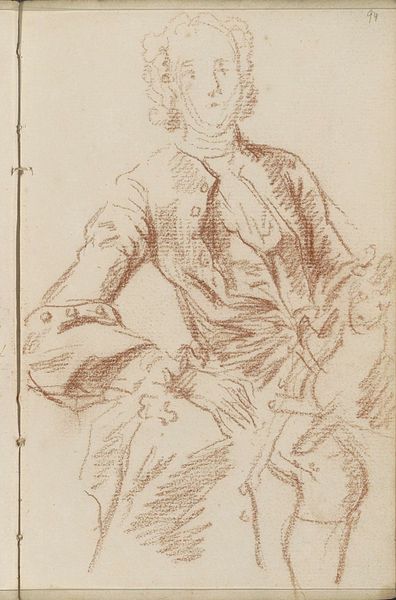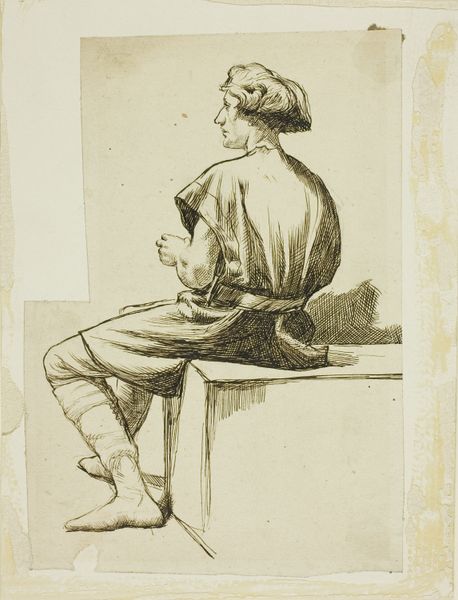
Dimensions: height 206 mm, width 163 mm
Copyright: Rijks Museum: Open Domain
Elisabeth van Woensel made this portrait of Jacob Carpi using etching, a printmaking technique that democratized image production. The artist would have covered a metal plate with a waxy, acid-resistant substance, then scratched an image into that coating. The plate was then immersed in acid, which bit into the metal where exposed, creating lines. These grooves would then hold ink, ready to be transferred to paper under pressure from a printing press. The etching process allowed for the relatively quick reproduction of images, fueling a boom in printed material. Unlike unique paintings or sculptures, etchings could circulate widely, impacting public opinion, documenting scientific discoveries, and creating a shared visual culture. Etching’s accessibility allowed artists to explore subjects beyond the traditional realm of portraiture, history, and religious scenes. By focusing on the printmaking process, we see how this artwork participates in a larger story of technological change and the broadening of access to art.
Comments
No comments
Be the first to comment and join the conversation on the ultimate creative platform.
